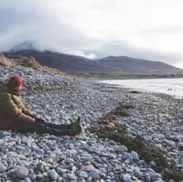Range Of Motion Exercises Flashcards, test questions and answers
Discover flashcards, test exam answers, and assignments to help you learn more about Range Of Motion Exercises and other subjects. Don’t miss the chance to use them for more effective college education. Use our database of questions and answers on Range Of Motion Exercises and get quick solutions for your test.
What is Range Of Motion Exercises?
Range of motion exercises, also referred to as ROM exercises, are a type of exercise designed to improve the flexibility and range of motion of a joint or muscle. These exercises involve moving the joint through its full range of motion in order to maintain normal movement. They can help reduce pain and stiffness in the joints, improve circulation, and enhance overall body strength and mobility.Range of motion exercises are typically performed with light weights or without any weight at all. This allows for greater control over the joint’s range of motion while avoiding injury. It is important to start out slowly with these exercises so your body can adjust while still getting the beneficial effects they provide. Some common range of motion exercises include: – Shoulder Circles: Stand up tall with your arms down by your sides, lift them up straight above your head then circle them around clockwise 10 times before going counterclockwise 10 times. – Arm Reach: Starting from standing position, reach one arm across your chest towards the opposite shoulder and hold for 15-30 seconds before switching sides. – Leg Swings: Standing tall with feet together bend forward slightly at the waist and swing one leg out in front then behind you as if you were performing walking lunges but without taking any steps forward or backward continue this for 30 seconds then switch legs. – Knee Flexion/Extension: Sitting on a chair or bench place both feet flat on the ground with knees bent comfortably; slowly move one knee up towards your chest until it is fully flexed then lower back down again repeat this 10-20 times before switching legs. It is important to perform each exercise slowly and carefully while maintaining proper form throughout every repetition in order to avoid any injuries caused by overstretching or straining muscles too much at once. Additionally, always consult a doctor if you feel pain when performing these types of movements so they can help diagnose any underlying issues that might be causing it before attempting any further treatments yourself at home.
























